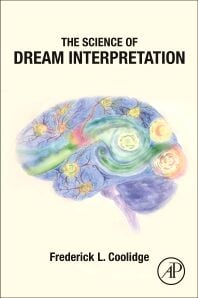After a juicy dream, many sleepyheads like to pull out their handy dream dictionary and search for meaning.
What the heck does a talking turtle mean? And why am I always running in slow motion?
Frederick L. Coolidge, who often dreams of the beaches and lakes around Miami where he grew up, begs you to stop looking for answers from such sources.
“There’s no standard glossary of dreaming,” said Coolidge, a professor and co-director of psychology undergraduate education at the University of Colorado at Colorado Springs. “A locksmith working for Henley’s Key Service and dreaming of a key and a lock, and an inmate dreaming of a key and lock — there’s no way they can mean the same thing. All dream books, while certainly entertaining, are not science. It’s not real, just entertainment.”
It’s not that he doesn’t believe in deciphering dreams. He does. Dreams have meaning and he’s written a book to prove it. His 13th book, “The Science of Dream Interpretation,” which was released in August, provides a scientific, historic and psychological background to help understand sleep, our perplexing dreams, where they come from and what to do with them. It’s available online at Amazon.com.
Coolidge has long been fascinated by sleep and dreams, sparked by his earliest memory — a nightmare he had about picking up his little brother from the hospital when he was about 2 years old.
“One of the reasons people memorize things is if it’s emotionally important,” he said. “If it’s important we’ll remember. If not, we’ll forget. That nightmare, the emotional weight of it, helped me have that as my earliest memory. That gave me this interest in sleep and dreams.”
Side note: Some of us are genetically predisposed to having nightmares, based on a study of identical and fraternal twins, Coolidge says. However, they also can occur after traumas and severe catastrophes, as we replay trauma in our dreams.
While attending the University of Florida, he found a job in a NASA-sponsored sleep lab and began monitoring EEG sleep. EEG stands for electroencephalogram, a test that measures electrical activity in the brain through electrodes attached to the scalp. He went on to do his master’s thesis and doctoral dissertation on the subject matter and began to develop an interest in dreams and their meaning.
In his book, Coolidge writes about the important dream theorists of the 20th century: Sigmund Freud, Carl Jung and Fritz Perls. Freud’s interpretation of dreams is still relevant, he says, in that dreams will brew up unconscious issues that will be masked or represented by other symbols. That’s why it takes a psychologist to help a patient interpret what those symbols and dream elements might represent.
Jung had a more positive view of the unconscious, Coolidge says, and saw it as more of a museum.
“Two of the most popular dreams are falling and being chased,” he said. “Our ancestors lived in trees, so falling was an issue. We were competing for food with other bigger mammals, so being chased and falling are part of our evolutionary history.”
Dreams aren’t random, Coolidge says. We write the script and add in all the characters every night. His last chapter delves into how he uses dream work in psychotherapy, giving the example of a patient meeting with a psychotherapist for the first time and feeling nervous to immediately discuss an intimate matter. It’s hard to trust someone with those sorts of life details, but beginning with a dream can provide a safe entrance into vulnerable territory.
“The great thing about dreams, you come in and the therapist says tell me a dream,” Coolidge says. “And you go phew, nobody minds sharing dreams. It’s a deceptive way of building rapport and getting people to open up. It starts effective therapy.”
We often dream about what’s missing or what’s difficult for us, he says, and that unfinished business will often cause recurring dreams about that very thing that’s missing or difficult. It won’t be obvious, though, according to Freud. Your brain will substitute a symbol. In his book, Coolidge wants to helps dreamers take those symbols and elements and role play them.
“What I’ve found is people come up with stuff and they surprise themselves,” he says. “I’ll ask them do you think this is your hierarchy of unfinished business? They say yes or no, not really, but I can work on this.”
By working to understand the distorted elements in a dream, the dreamer can bring them from the unconscious to the conscious and begin to heal.
“If we can bring the issue to light,” Coolidge said, “by sleeping, dreaming and thinking about it during the day, you’ll come up with a solution.”
And while you might be able to do this healing work on your own, Coolidge believes it goes much better if you do it with a trained professional who won’t give you advice, but will help walk you through the process. It’s difficult for us to see ourselves and our symbols objectively.
“If I said tell me the worst things people say about you behind your back, I don’t think you can guess,” he said. “We’re defended against that stuff.”
Don’t be afraid of your dreams. And don’t dismiss them, either, as miscellaneous garbage your brain produces in the night. Almori, a Jewish rabbi, physician and philosopher in the early 1500s, called dreams letters we send to ourselves.
“If you don’t open the letter, it’s a shame,” Coolidge said. “Just read it. You don’t have to go into heavy detail. He said one out of 60 dreams will be divinely inspired, so if you don’t open the letters God will stop sending you messages.”
Contact the writer: 636-0270





 Your Privacy Choices
Your Privacy Choices